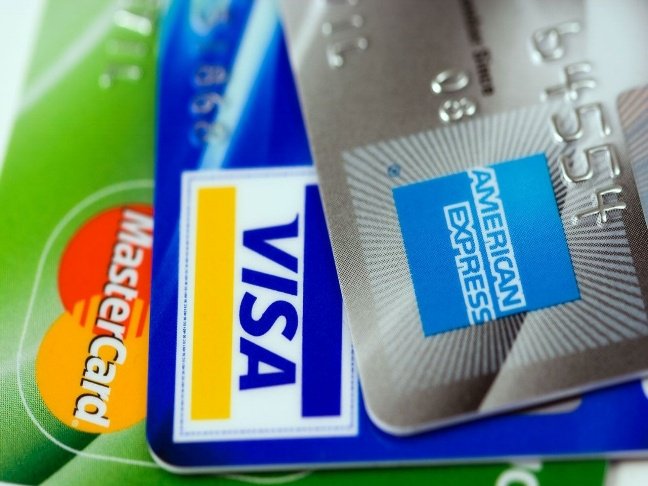Preventing fraud is an important step towards safeguarding your business and protecting customer information. Many major card providers utilize a range of security features and fraud prevention strategies to ensure merchants and customers are protected.
American Express is one such provider.
There are a variety of American Express security and fraud prevention strategies. When accepting an American Express card, you can feel rest assured that the following tactics will keep you and your customers safe:
Physical card security features
American Express cards have a number of sophisticated security features that can help you determine if a card is genuine. Absence of any of these features may signal that the card has been altered or is not authentic. Check carefully before accepting a card for a transaction. Here are the main features that will be present on a card:
- AmEX card number beginning with “37” or “34” on the front of the card, embossed clearly in uniform size with equal spacing between each number, no crooked spacing. Sometimes the number is repeated in the signature panel on the rear of the card. These numbers must match the one on the Charge Record
- The cardholder name should be the name of the person carrying out the transaction, and should be clearly spaced and printed in a straight line
- Both card numbers and cardholder names should be in the American Express typeface
- CID numbers appear on the right or left edge of the card, above the card number
- Dates should be valid
- Some AmEx cards have chips that store data used to carry out a transaction
- Many AmEX cards have a hologram on the front or back
- The cardholder signature on the back of the card should match the signature on the Charge Record and the name on the front of the card. A mismatch is a sign of fraud
- Some cards have a three-digit CSC number on the signature panel
- There should be no tape, paint, or signs of deliberate damage on the card, especially on the signature panel. Ensure there are no marks left from a previous embossing or printing that has been covered over
- The magnetic strip should not be damaged or altered
- The card should not feel bumpy or bent.
Look out for suspicious behavior
Understanding the signs of a fraudulent situation can help you flag a fraudulent customer. While one suspicious behavior isn’t enough to flag a transaction as fraudulent, if a customer shows a number of the following behaviors, you should question the authenticity of their card and identity.
- Anonymous or free email addresses being used for online orders
- Orders sent to countries with a history of fraud
- Ordering a large quantity of one item
- Higher value transactions than normal, especially if the customer usually buys small things using cash, or if the buyer is a first time customer
- Customers buying a large quantity of high-value goods of all kinds, with no care for specific details of the products (different colors, sizes, etc.)
- Purchasing a large number of goods right at the end of the working day before closing time
- The customer wanting to rush or distract you, or being rude towards you
- History of disputed charges
Card acceptance policies and procedures
American Express has a set of card acceptance policies and procedures. Following these rules ensure maximum protection and decrease your chances of accepting fraudulent transactions. For example:
- Merchants must attain an electronic AmEx authorization approval for the charge’s entire sum, regardless of the amount, unless the merchant belongs to the restaurant, vehicle rental, or lodging industries.
- In cases where an electronic authorization fails, merchants should get voice authorization by calling the merchant service provider and telling them the payment details, so they can request the authorization. Merchants must make sure to enter the approval into the POS system.
- Merchants must submit all charges and credits due to the merchant service provider within seven days.
Use American Express Fraud Mitigation Tools
A range of fraud mitigation tools are provided by American Express, for both Card Present and Card Not Present transactions, to help you minimize fraud. Their tools include:
For Card Present Transactions:
- CID verification– The merchant requests the four-digit CID authorization from the rear of the card and sends it with the authorization request, upon which the Issuer will compare it with the one on file and return a match code. Matching these numbers helps make sure the card in question is not altered or copied.
- Track 1 – The POS terminal will capture the data on the Track 1 of the magnetic stripe, sending it to the Issuer with the authorization request, upon which the Issuer will compare it to the information on file and send an approval decision. This ensures the magnetic stripe has not been altered or tampered with.
- Chip – The embedded microchip on some cards is used to encrypt cardholder information, so unauthorized parties can’t access the data or copy it. A chip-enabled terminal is used to read the card.
- Terminal ID – A unique identifier for each of your POS devices is sent with each authorization request. This helps to identify high-risk POS device patterns.
- Code 10 – This secret phrase can be used to inform your merchant services provider that a transaction seems suspicious. Call the merchant service provider and tell them the code, but only pick up a card if they direct you to do so — and never do anything that puts your safety in question.
For Card Not Present transactions:
- CID verification – The merchant requests the four-digit CID authorization from the rear of the card and sends it with the authorization request, upon which the Issuer will compare it with the one on file and return a match code. Matching these numbers helps make sure the card in question is not altered or copied.
- Email, billing phone number, name and address verification – The merchant requests these details from a customer and sends them with the authorization request, upon which the Issuer will compare them with the details on file and return a match code. Matching these details helps make sure the customer’s identity is genuine. If a customer were to try and make a payment online using card information that is not their own, it’s likely that they won’t know any of these details.
- Enhanced authorization – The use of additional elements for authorization that describe the transaction, such as shipping addresses and transaction origin, so a more informed decision can be made and fraud can be prevented.
Ensure you follow the American Express guidelines and use their built-in tools to prevent fraud. Learn to recognize suspicious behavior and look out for signs that a card is not authentic. With these strategies, you can be sure to minimize fraud when accepting American Express cards, decreasing your losses and keeping cardholder data secure.






